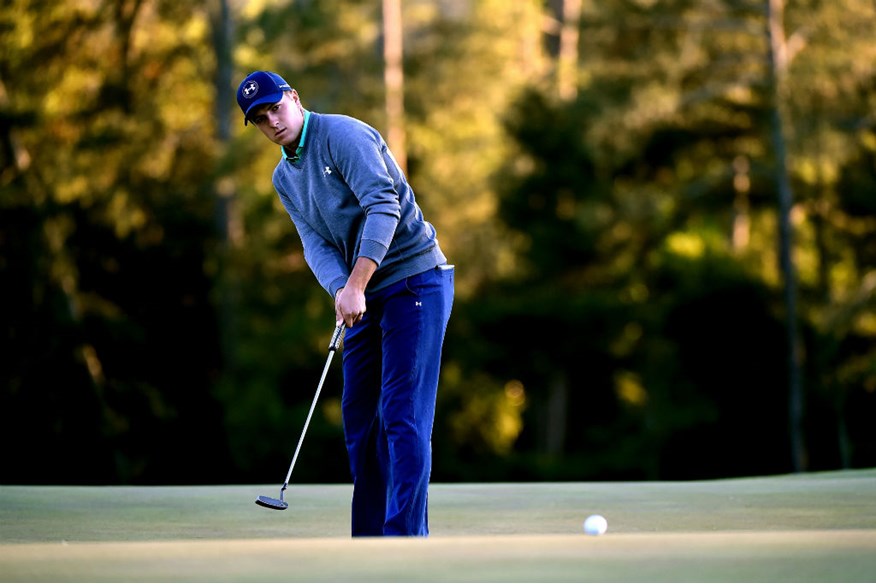The BIG problem with golf statistics
Published:
“There are three kinds of lies,” said Mark Twain. “Lies, damned lies, and statistics.”
The sentiment was echoed by another of the world’s great thinkers, Homer J. Simpson:
Unfortunately, I’d wager that well over forfty per cent of people don’t realise that traditional golf statistics are at best useless and, at worst, downright harmful.
Allow me to explain.
Putts per round
“I putted terribly today. I took 34 putts. Yesterday I was much better and only had 28 putts.”
I hear things like this all the time. It seems simple enough, doesn’t it? The fewer putts you took, the better you putted, right? Probably not.
Let’s say you were lucky enough to play two rounds of golf last weekend.
On Saturday, you were hitting it all over the shop. Your driving was terrible, so you were never in a good position, and even when you had a chance to hit a green in regulation, you missed. As a result, all of your shots that actually ended up on the green were from a relatively short distance. Little chips if you just missed a green, maybe mid-range pitches if you had to lay-up. You’ve got a half-decent short game, so you managed to put some of these fairly close and got up-and-down quite a few times. The result? 28 putts.
You played again on Sunday, and you were swinging it much better. You were hitting great drives and you hit every green in regulation. You were hitting anything from a full 7-iron right up to a hybrid for your approach shots, which understandably didn’t all finish exactly stone dead. You did manage to stick one fairly close, which set up a birdie chance you capitalised on, and you drained a 40-footer for birdie. The result? 34 putts.

Here’s the thing: You did not putt any better on Saturday than you did on Sunday. On Sunday, you holed the only genuine birdie chance you had, managed to drain one you had no right to make, and managed to avoid any three-putts, despite being miles from the hole on several greens. The only reason you took fewer putts on Saturday is because the shot that preceded your first putt was always from near the green. On Sunday, hitting full shots from 150-250 yards away, you were never going to be able to consistently put it as close, meaning you were putting from further away. If you counted the total distance your putts covered, rather than the number of them, you’d find a much higher number on the Sunday. Putts per round treats a two-putt from four feet the same as a two-putt from 104 feet, which is like saying you’re okay to drive because you only had one beer, ignoring the fact it was an eight-litre tankard.
% of fairways hit/driving accuracy
You’re standing on the tee, driver in hand. Would you rather tonk one 330 yards and have it roll three inches into the first cut, or sky one 80 yards that thuds down at the very start of the fairway, leaving yourself 360 yards for your second shot?
Therein lies the problem with fairways hit.
There’s also the fact that it doesn’t track the severity of your misses. The above 330-yarder could leave you in a great position to set up a birdie or eagle chance. But in terms of a missed fairway, it counts exactly the same as a banana slice out of bounds.

Greens in Regulation
Shot A: A sand wedge on a 93-yard par-3 that just creeps onto the green but is 130 feet from the pin.
Shot B: A 4-iron on a 228-yard par-3 that finishes six feet from the pin, but an inch onto the fringe.
Which was the better shot? According to the GIR statistic, it’s Shot A. According to common sense, it’s Shot B by a million miles.
The PGA and European Tour have realised the weakness of traditional statistics, which is why they now focus on things like strokes gained in various aspects of the game. Many tour pros are obsessed with statistics, but not ones as arbitrary as those discussed above. But an army of statisticians aren’t tracking every shot that you and your mates hit and crunching the numbers, so you’re left with the rudimentary statistics above.
Unfortunately, focusing on worthless statistics is not just a waste of time, it could also mean that you spend your time working on the wrong aspects of your game, attempting to fix problems that you don’t have while ignoring your actual weaknesses.



